#Loki and Persephone
Text
Persephone: Hades, say sorry to Loki.
Hades: ... My apologies Loki.
Persephone: And now, Loki, say sorry to Hades.
Loki: ...
Loki: Unfuck you I guess.
#he's trying okay#actually that's a lie#loki mythology#Loki and Persephone#loki and hades#persephades#lo persephone#lo hades#lore olympus incorrect quotes#Lore olympus crack#Norse myths#loki
76 notes
·
View notes
Text
Amongst many other things in witchcraft, I uh...
I was not prepared to have to tell people I'm giving free readings "Sorry, my deities aren't letting me have my cards back until I address a personal issue. They're hijacking my cards."
Loki, Persephone, and Hades have all confirmed through card imagery and such that yes; they are hijacking my cards. Like.... I recognize that if I truly told them "no, respect boundaries" they'd let me have them back but....
I find it hysterically funny that I'm experiencing what it's like when your deities essentially stage an intervention.
#witchcraft#paganism#witchblr#pagan witch#pagan#eclectic pagan#witch community#paganblr#deity work#witch blog#loki deity#persephone devotee#hades devotee#loki devotee#hades deity#persephone deity
156 notes
·
View notes
Text
You want to fall on your knees.
You want to scream and beg about everything, that's wrong. Everything that's right and still wrong. What you should be. What you want to be. How your whole body hurts and the pain seems to go beyond. How it makes the whole world hurt. You plead for death or life or anything but this. You are chocking on your words as you realize... This is not how it works.
And your deity takes your hand. They hold you tight as they say
Do not kneel.
I walk with you. Help you. Teach you all I can. I care for you. But do not kneel in front of me and plead.
You have to stand so I can walk with you.
353 notes
·
View notes
Text
Why are Sigyn and Persephone never included in any modern media with their boys, you ask? Because Disney and Marvel are too cowardly to have their morally grey villain gods in healthy romantic relationships
158 notes
·
View notes
Text
IDEAS FOR TALKING TO DEITIES, GUARDIANS, AND PURSUERS
NOTE: THESE ARE JUST SUGGESTIONS, YOU CAN TALK TO ANY DEITY, GUARDIAN, OR PURSUER ABOUT ANYTHING.

APHRODITE:
• Relationship and romance.
• Love, beauty and sexuality.
• Creativity, art and the creative process.
• Confidence, self-worth, self-renewal, and self-love.
• Emotions, healing and emotional health.
• Success and achievement.
• Strength, power and leadership.
• Spirituality and the divine feminine.
• Intuition, spirituality, and enlightenment.
• Women's empowerment and strength.
• The beauty and value of love.
• Pleasure, joy, and happiness.
• Passion and sensuality.
• Intimacy and vulnerability.
• Femininity and motherhood.
• Fertility and creation.
• Beauty and style.
• Life and death.
BAPHOMET:
• Sexuality and sensuality.
• Spirituality and enlightenment.
• Independence and self-actualization.
• Creativity and the creative process.
• Power and control.
• Empathy and emotion.
• Nature and the balance of opposites.
• The occult and the divine.
• Authority, dominance, and leadership.
• The self versus the selflessness.
• Duality and the balance of energies.
• The shadow self.
• Masculine vs. feminine.
• Life and death.
• Destruction and creation.
• Sacrifice and self-improvement.
• Unity and separation.
• Knowledge and wisdom.
• Willpower and discipline.
• The mystical and the mundane.
CERBERUS:
• Guardianship and protection.
• The afterlife and the Underworld.
• Mortality and death.
• Strength and power.
• Loyalty and devotion.
• Discipline.
• Security and safety.
• Guarding secrets and information.
• Knowledge of the past.
• Guarding the boundaries between the realms.
• Wisdom and intuition.
• Balancing light and dark.
• Justice and punishment.
• Loyalty and devotion.
• Self-growth and soul evolution.
• Spiritual growth and enlightenment.
• Overcoming fear and overcoming struggles.
FREYA / FREYJA:
• Love and relationships.
• Sexuality and self-expression.
• Romance and intimacy.
• Women's empowerment.
• Lust and pleasure.
• Friendship, connection, and compassion.
• Women's issues and values.
• Self-love and self-acceptance.
• Femininity, motherhood, and fertility.
• Strength and power.
• Warrior's spirit.
• Courage and self-assertion.
• Strength as a woman and womanly empowerment.
• Crushes.
• Sexuality and sensuality.
• Women and spirituality.
• Womanhood, fertility, and femininity.
• Life and death.
• Spirituality and the divine feminine.
• Pregnancy and childbirth.
• Strength and discipline.
FENRIR:
• Destruction and rebirth.
• Power and vengeance.
• Chaos and anarchy.
• Strength and bravery.
• Loyalty and devotion.
• Rebellion and revolt.
• Hunting and hunting tactics.
• Survival instincts and primal nature.
• Predation and prey.
• Strength, ferocity and dominance.
• The instinct to hunt and kill.
• Importance of loyalty.
• Power of leadership and authority.
• Freedom and independence.
• Primal instincts and animalistic nature.
• Violence and aggression.
• Protection and guarding.
• Dominance.
• The will to survive at all costs.
• The desire to conquer and destroy.
HADES:
• Death and the afterlife.
• Mortality and immortality.
• Life and death.
• Judgement and justice.
• Wisdom and enlightenment.
• The soul and the divine essence.
• Strength and power.
• Secrets and hidden depths.
• Emotions and spirituality.
• Shadows and darkness.
• Wisdom and knowledge.
• Spirituality and divination.
• Discipline and restraint.
• Power and authority.
• Rebirth.
• Vengeance and punishment.
• Fate and destiny.
• Healing and recovery.
• The subconscious.
• Soul healing and spirituality.
HECATE / HEKATE:
• Spells and spell casting.
• Protection and warding off negativity.
• Divination and insight.
• Spiritual power and enlightenment.
• Psychic awareness and intuition.
• Natural and mystical spirituality.
• The occult and mysticism.
• Witchcraft and Witchcraft practices.
• Healing and energy work.
• Guidance.
• Ritual practices.
• Spirit work and spiritual guidance.
• Psychic abilities and intuition development.
• Magick and mysticism.
• Healing and recovery.
• Self-empowerment and spirituality.
• Dreams and dreamwork.
• Spirit communing and manifestation.
• Rituals and altar setup.
• Spiritual tools and practices.
HEL:
• Life after death and the afterlife.
• Death and dying.
• Protection and salvation.
• Life and death.
• Self-improvement.
• The soul and the divine essence.
• Wisdom and insight.
• Vengeance and punishment.
• Healing and recovery.
• Spirituality and the divine feminine.
• Past lives and reincarnation.
• Soul travel and astral projection.
• Spiritual enlightenment.
• Death rituals and burial customs.
• Spirit guidance and divination.
• Soul recovery and enlightenment.
• Communication with spirits and the divine.
• Spiritual protection and salvation.
• The cycle of life and death.
• Spiritual journey and transformation.
LOKI:
• Mayhem and chaos.
• The art of manipulation and deception.
• Humor and playfulness.
• Illusion and deceit.
• Mischief and pranks.
• Trickery and mischief.
• Wisdom, insight, and understanding.
• Imagination and creativity.
• Exploration and experimentation.
• The power of charisma and persuasion.
• Inner child healing.
• Funny stuff that’s happened in your life.
• Self-expression and creativity.
• Freedom and independence.
• Rebels and rebellion.
• Anarchy and revolution.
• Outcasts and misfits.
• The illusion of reality and the veil of illusion.
• Truth.
• Masks and unmasking.
• Childhood trauma.
LILITH:
• Women's empowerment.
• Self-love and self-acceptance.
• Femininity and motherhood.
• Self-value and self-confidence.
• Lust, desire and sexuality.
• Intimacy, spirituality and empowerment.
• Love and romance.
• Spirituality and Goddess energy.
• Women's issues and values.
• Power and domination.
• Your sex life.
• Women's rights and autonomy.
• Sexual liberation and empowerment.
• Self-worth.
• Freedom and independence.
• The divine feminine and the cycle of creation and destruction.
• Power and strength.
• Emotions and emotional health.
• Femininity and divinity.
• Self-empowerment and self-love.
• Physical and spiritual pleasure.
LUCIFER:
• Self-power and independence
• The rejection of societal norms and expectations.
• Enlightenment, wisdom, and knowledge.
• Freedom and rebellion.
• Revolution and defiance.
• Charisma and confidence.
• Manipulation and strategy.
• Pride and ego.
• Darkness and forbidden arts.
• Spiritual evolution and expansion.
• Destruction and chaos.
• Morality and the morality of actions.
• The self-preservation aspect of consciousness.
• Spiritual enlightenment and wisdom.
• Strength and courage in confronting authority.
• Self-love and self-care.
• The dark side of human nature.
• Rebellion and rebellion against tyranny.
• The dark side of the self.
• Shadow work and spiritual evolution.
NYX:
• Night and the dark side of reality.
• Destruction and rebirth.
• Mysteries and secrets.
• Spiritual energy and magic.
• Wisdom and insight.
• Spiritual protection and guidance.
• The paranormal and the demonic.
• Psychic abilities and spirituality.
• Intuition and spirituality.
• Darkness and the occult.
• Dreaming and dreaming interpretations.
• Spiritual protection and healing.
• Dreamwork and astral travel.
• Spiritual journey and self-exploration.
• The cycle of death and rebirth.
• Soul evolution and enlightenment.
• Mysticism and the paranormal.
• Darkness and mysticism.
• Shadows and the subconscious.
• Visionary abilities and metaphysical abilities.
PERSEPHONE:
• Women's fertility.
• Spirituality and rebirth.
• Spiritual protection and guidance.
• Emotions and emotional healing.
• Motherhood and feminine values.
• Intuition and spiritual growth.
• Pregnancy and childbirth.
• Self-love and self-preservation.
• Feminine spirituality and divine energy.
• Relationships and bonds.
• Love and connection.
• Intimate relationships.
• Emotions and compassion.
• The divine feminine and the feminine archetype.
• Feminine spirituality and energy.
• Motherhood.
• Self-care and self-preservation.
•Bonding.
• Emotional healing.
• Marriage and relationships.
SKÖLL AND HATI:
• Nature and the balance of nature.
• Destruction and rebirth.
• The cycle of life and death.
• The power of wolves.
• Pack structure and hierarchy.
• Sacrifice and devotion.
• Leadership and loyalty.
• Strength and survival.
• Predation and pack dynamics.
• Hunting.
• Bonding and unity.
• Coexistence and acceptance.
• Endurance and perseverance.
• Primal instincts and spirituality.
• Survival skills.
• Hunting techniques and strategies.
• Teamwork.
• Loyalty and devotion.
• Wolves and wolf behavior and psychology.
SELENE:
• The cycle of time and its passage.
• The phases of the moon and the cycle of months.
• Femininity and feminine power.
• Moonlight and lunar energy.
• Spiritual protection and guidance.
• Feminine values and wisdom.
• Self-love and self-care.
• Spiritual empowerment and enlightenment.
• Femininity and motherhood.
• Female energy and feminine mysticism.
• Intuition and intuitive energy.
• Emotional healing and spiritual protection.
• Feminine spirituality and feminine archetypes.
• Dreams and dream interpretations.
• The connection between sexuality and female energy.
• The power of the divine feminine.
• Women's values and spirituality.
SANTA MUERTE:
• Death and the afterlife.
• Self-protection and spiritual protection.
• Healing and recovery from trauma.
• Spiritual empowerment and enlightenment.
• Spiritual protection and guidance.
• Spiritual healing and soul purpose.
• Karma and cosmic justice.
• Spiritual intuition and divination.
• Spiritual evolution and enlightenment.
• Self-expression and self-identity.
• The afterlife and the spiritual realm.
• Reincarnation.
• Spiritual evolution and growth.
• Soul purpose and spiritual awakening.
• Spiritual divination and communication with spirits.
• Spiritual healing and soul healing.
• Healing past-life connections.
• Spirituality.
#fyp#fypシ#fypシ゚viral#fypage#fyppage#tumblr fyp#satanism#satanist#deity#deity work#deity worship#aphrodite#baphomet#cerberus#freya#freyja#fenrir#hades#hecate#hekate#hel#loki#lilith#lucifer#nyx#persephone#sköll#hati#selene#santa muerte
44 notes
·
View notes
Text
Persephone Tim to accompany Hades Ashes fits really well with their playing Loki and Sigyn and Osiris and Isis.
With Osiris and Isis it’s extra fun because they switched.
#the mechanisms#gunpowder tim#ashes oreilly#persephone and hades#udad#loki and sigyn#tbi#osiris and isis#ttbt2
83 notes
·
View notes
Text
Hello!
Hello witch friends! My name is Fey (she/they) and this is the start of my witchcraft blog! I will be following anyone who wants to chat or who posts about the following
tarot and divination
crystals
herbalism
chaos witchcraft
WEATHER WITCHCRAFT!! <3
kitchen witchcraft
people who work with the greek and norse gods!
and lastly those who like girls they just wanna have fun
man idk im trying something new
#witchblr#witchcraft#storm witch#paganism#pagan#hellenic polytheism#norse paganism#witch community#green witch#herbalism#hecate#thor#loki#apollo#persephone
25 notes
·
View notes
Text
Thinking about it, I do believe that the big misunderstandings of the Greek gods on the Internet today (or in media recently) is due to a problem of... let’s say “character VS personification”.
People have grown too much accustomed to the consumption of Greek myths and legends as... not so much “stories” but... as fiction. Which leads them to treat the Greek gods as characters of tales and stories. Which leads people to treat them like... well, like people. Like full humans. Thinking about their actions only in terms of human/social/psychological reasons and consequences. And people forget the very essence and nature of the gods...
The Greek gods are personifications. They are allegories, and their actions always reflect their actual nature as a part of the world or a human phenomenon. It is true that when you read the Greek myths as they reached us today, you will read what seems to be stories about super-humans, because said stories were given to us through epic poems and theater plays. But there was a whole theology and religious thinking behind those myths (to the point some of the ancient litetature of the Greeks was criticized by religious authorities for deviating from their actual beliefs) ; and there was an entire philosophy surrounding those myths. Literal philosophy - with Ancient Greek philosophers not only re-reading and interpreting the myths in the lights of their teaching, but also inventing their own “philosophical myths”. The Greeks had time to read and rewrite and discuss their own myths and stories for centuries and centuries - and thus these stories ended up with numerous layers of meaning and interpretations woven through them.
Which is why to fully understand a myth, one must look behind the simple story. A god in the story is never just a character, but always something else. Poseidon is a grudge-holding, monster-birthing deity prone to mood swings which place him alternatively as an ally or an antagonist - but it isn’t just because “he is like that”. He is like that BECAUSE he is the god of the sea, and the Greeks, as sailors and explorers and island-dwellers, knew very well that the sea was a changing and treacherous thing, the sailor’s best friend and worst enemy at the same time. The fact that Apollo is at the same time the god of truth, the god of beauty and the god of art isn’t just because it’s his hobbies - it is because for the Greek all these concepts were inter-connected, art being beauty, the truth being beautiful, the best art being the truthful art, etc... And as a result myths are always about something else than their own story. The most famous case being Persephone’s abduction. People keep treating it as just being a love story - forgetting that, beyond the story of a guy in love with a girl and a mother worried for her missing girl, it is actually also a fable for the brutality anf unfairness of death striking young people, and how a mother can deal with her grief. It is literaly the story of “Kore” (which isn’t a proper name, but just means “maiden” or “young girl”), being ravished by Hades (whose name is ALSO the name of the Underworld), of a young girl plunged from the world of the living to the world of the dead, and a distressed mother crying for her disappeared daughter...
I can list on and on the examples, but I think you get my point. Yes, it is nice to know the story. It is better to try to understand them. The topic came when I read something about Zeus recently... It talked about the gods embodying “order” - and it listed Zeus, for after all he was the ruler of the cosmos, punisher of wicked ones and fighter of monsters, the god of justice overseeing all oaths and the basic principles of Greek society... But this text added that however, his behavior character wise was “much more chaotic”. Notably pointing out towards Zeus’ wild behavior around females of all kinds. It is true that a serial cheater with a HUGE number of lovers of all kinds, and lots of “bastard children” everywhere seems to contradict his role as a god maintaining order and morals... But again, the key is looking beyond that. Yes, Zeus is massively unfaithful on his wife and seemingly can’t keep his thunderbolt in his pants - if you pardon me the expression. But the question that nobody asks is... Why is he like that? Why does he do that? Just because he is a horny guy? That’s the superficial explanation, that’s the joke explanation. That’s not what the Ancien Greeks would have answered you. This precise topic is one I like to reuse frequently because it illustrates perfectly something that feels natural to those that read about Greek mythology from experts, and yet can seem like a sudden mindblow for those that only know Greeks myths from popular fiction.
I do not recall where exactly I read this explanation - but I am certain it was in one of the books about Greek myths written by famous French experts, so it was probably from Jean-Pierre Vernant or Pierre Grimal, or someone of those waters. Why is Zeus such a horny dog? We have to think about his titles. “Father of Men and Father of Gods”. It isn’t just a nickname or a title, it describes what he does: he birthed most of the major Greek gods, and he birthed many ancestors of humanity. It also makes you think: what was Zeus’ first action when he became king of the cosmos, when he took over the world after fighting the Titans? He married, several times, and had numerous lovers, with which he birthed some very important gods. Through sex he actually created important elements needed for the world. Not counting the other Olympian gods, he gave birth at the beginning of his reign to the Arts (Muses), the Seasons (Horae) and Fate itself (the Moirai), basis for the civilized world and an ordered, stable cosmos. And who are the other children of Zeus, all those “bastards” children he got out of being unfaithful? Heroes. Heroes who build principles of civilization, heroes who destroyed monsters, heroes who threw down criminals and tyrants. Good things. That’s the thing with Zeus: he constantly lusts after women, yes, and he constantly has sex, yes... but most of the time, if not always, it is to create something good. He keeps procreating beings, things and people needed for the universe to form itself, for civilization to form itself, for the world to get better and evil/chaos to be defeated. Herakles and Athena and Perseus... Even through his unfaithfulness, Zeus keeps creating new agents and champions of order, law and justice.
It is in fact quite interesting to look at Tumblr here, because on Tumblr there are favorite deities who are depicted right because people love them enough to go dig into their symbolism and their religious festivals and their philosophical meaning. Dionysos is the one that comes to mind. And then other deities whose deeper meaning gets thrown out of the window.
A good counterpart to Greek mythology, in the approach of “character vs personification”, is Norse mythology. Because the Norse gods, as depicted and represented in mythological texts such as the Eddas, are actually “characters before the personifications”, the reverse of Greek gods which are “personifications which were given character”. I am not saying that the Norse gods aren’t personifications, that would be a stupid claim. But what I am saying is... Often people try to enter Norse mythology asking “So, this god, what is he the god OF?” because they assume Norse gods are like Greek gods, defined by their field of action and what they represent or rule over. When in truth, the Norse gods are defined by who they are, not so much by what they are. Odin is the one-eyed wanderer, and the eight-legged horse-rider king of the Aesir, and the cunning rune-master ruling over Valhalla. Thor is the very strong god, and the hammer-wielding jötunn killer riding on a goat-chariot, and the red-haired hero of Asgard who fears nothing and fished Jormungandr out of the sea once. Everybody knows today that Thor is the god of thunder and lightning - but it isn’t said, or explicitely spelled out in most of the Old Norse texts. It is not like Zeus who is explicitely said to use thunderbolts on his ennemies - Thor’s hammer doesn’t have lightning shooting out of it. To get this, to get what a Norse god is the “god of”, there is a work of research that needs to be done. For a Greek god it can be obvious due to their attributes and names (Hestia for example - her name literaly means “hearth” and she started out as the hearth being venerated, before being personified). For a Norse god, to get the “what” of the deity, you will need to look at the archeological remains of the religion and cult of Norsemen, you will need to theorize based on the etymology of the deity’s name and its relationships, you will need to collect the kennings and local expressions and other folk-sayings and interpret them. It is a para-characterization that isn’t obvious, or sometimes doesn’t even appear, in the Norse texts per se. Because in the Norse legends as they came to us, the gods are mostly defined as characters - by their function (guardian, warrior, king), by what they do (power to see far-away, power to know the future), by what they look like (missing one hand, or golden hair)... For exampe, for a very long time it was thought that Loki was the god of fire. It was a strong, popular and famous interpretation - but research and experts have proven that it is a late re-interpretation of the deity, who originally probably didn’t had anything to do with fire and was just mixed up with other fire-figures (like Logi) with time, the same way Loki was mixed with Utgard-Loki as a “master of illusions”.
This phenomenon of inversion can be summed up quite easily. In Greek mythology, we have TONS of secondary and tertiary deities who are basically personifications without any kind of legend or myth to them, uncharacterized allegories that sometimes are just a name appearing in a list of concept. In Norse mythology, you have tons of secondary and tertiary deities without myths or legends, who are just names in a list - but this time, we have their names, we have a basic characterization, we know who they are, and the problem is that we don’t know what they are supposed to represent. You have tons of small Norse gods about whom people keep asking and searching “What did they embody? What did they personify?”. The character without the personification.
212 notes
·
View notes
Text
hello lovely internet witches! So I’ve got a question.
I just got one of those packs of pocky with like 9 small ish bags, and I thought they’d be perfect for Yule gift offerings to the gods. HOWEVER, I come from a family where food waste was a really big deal and it’s been kind of tattooed onto my brain to not throw edible things away.
So I was wondering if, in the spirit of Yule, the gods would be okay with me putting the pocky on their altars for a few days and then giving them away to some of my friends and family. Would they be okay with this? Would certain gods be okay with it while others won’t? I’m not an expert in deity communication but I really want to be sure they’re okay with it beforehand so I don’t upset anybody. List of deities I worship (have altars to more specifically), there are some different pantheons mixed in there and there’s seven in total because I have no impulse control, lmao
Aphrodite, Anubis, Hades, Persephone, Loki, Hypnos, and Morpheus.
If someone could double check and see if they’re all okay with this arrangement I’d be super grateful!
have a great day and take care of yourselves 🍄
#witchblr#witchcraft#witches#celtic paganism#greek paganism#hellenic pagan#anubis worship#anubis deity#anubis god#aphrodite deity#hades deity#hades devotee#persephone deity#persephone worship#loki devotion#loki deity#norse loki#hypnos deity#morpheus deity#deity work#pagan#paganism#pagan witch#paganblr
39 notes
·
View notes
Text
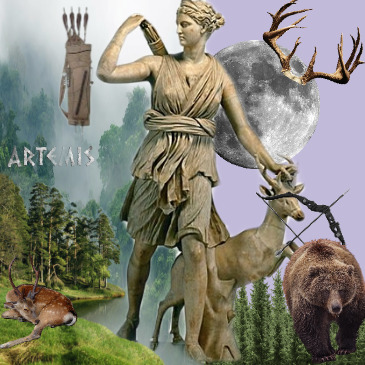
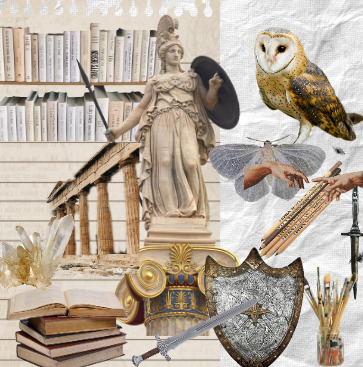
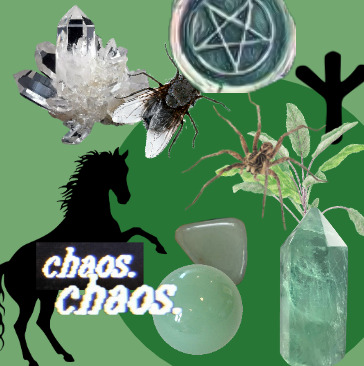
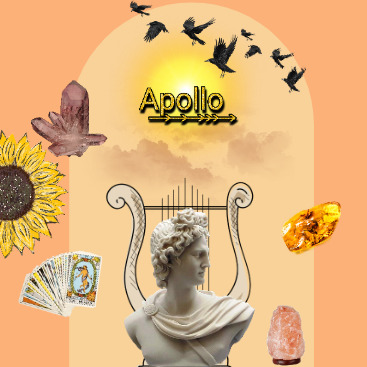


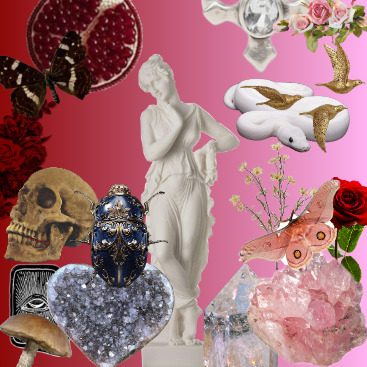
a few digital offerings to Artemis, Loki, Apollo, Aphrodite, Hades, and, last but not least, Persephone. Made this during an all nighter last week, but forgot to share them
#witchcraft#hellenic pagan#witchblr#hellenic polytheism#hellenism#pagan witch#apollo#deity work#aphrodite#loki#hades#artemis#persephone#art witch#digital offerings#digital witchcraft#deity moodboard#Greek mythology moodboard
11 notes
·
View notes
Text
So here’s the crystals I got and who they’re for (under cut)!

Pink Opal for Aphrodite

Obsidian for Hades

Amethyst for Hecate
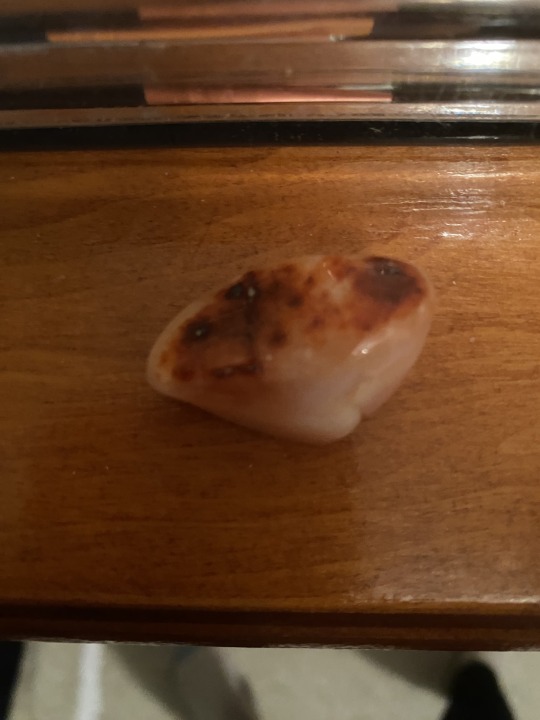
Carnelian for Athena
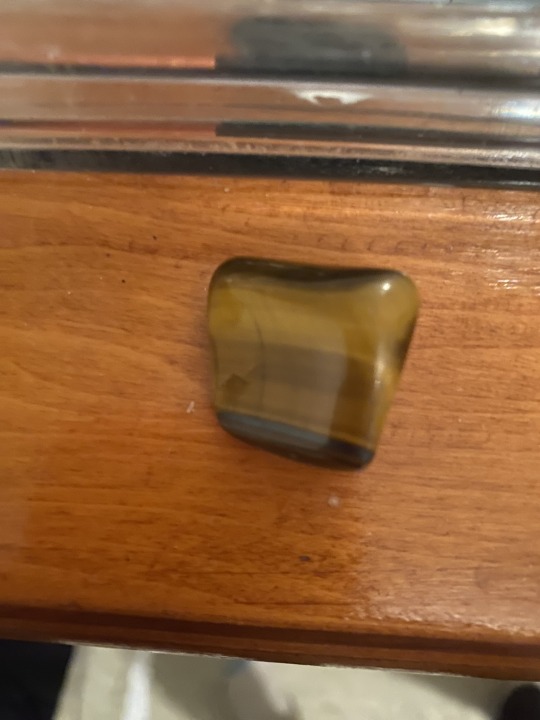
Tigers Eye for Zeus
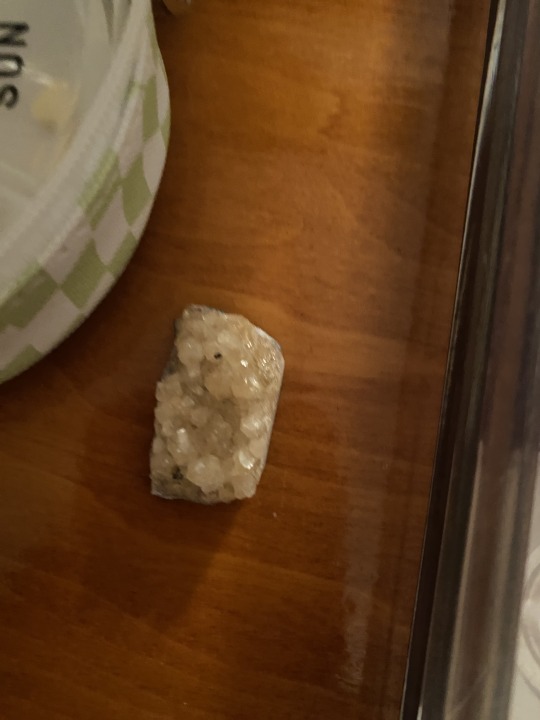
And Citrine for Apollo!
#Witchcraft#Crystals#Deity work#Apollo#Athena#Aphrodite#Zeus#Hades#Hecate#I didn’t get ones for Loki or Persephone though#Loki would’ve been doubles and that’s suspicious#And I’m not fully working with Persephone yet#Apollo’s and Aphrodite’s are at their respective altars.#The rest are just lined up so it’s not that suspicious
10 notes
·
View notes
Text
Loki and Demeter (LO Headcannons) #1
“I can explain.”
“Can you?”
“If you give me thirty seconds to think of a lie”
I was looking up incorrect quotes and this would be Demeter and Loki’s relationship in a nutshell since they have many things in common but their personnality are extreme opposites.
It would be so interesting to have these two talk together, especially since Loki really lived what Demeter fears the most: the harm of their own children.
But even with this, it’s not in Loki’s nature to overprotect on the contrary. Go out there, stir some shit up, that’s the only way you’ll learn. He would rather go and murder whoever harm his kids (unless he’s stuck like with his loyalties to Asgard) than shelter them. As a God of the vikings this isn’t really surprising.
Demeter wouldn’t understand how he could claim loving his children let letting them face such terrible fates and Loki don’t see how building walls around Persephone is going to help her in front of real danger.
But deep down, I know these two would respect and understand each other more than their peers. After all, they’re both mothers.
#lo headcannons#Greek Mythology#norse mythology#Norse myths#myth loki#loki#demeter#lore olympus au#lore olympus incorrect quotes#Loki and Persephone#lo demeter#lo persephone
44 notes
·
View notes
Text
I need witchy friends please anyone who practices witchcraft/Wicca and/or is pagan please let’s be friends. (⬇️ this is all I need in life)
Also feel free to message or you can add me somewhere else if you want
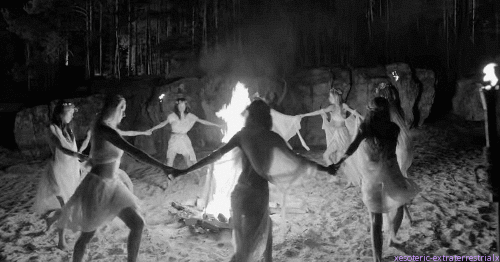
#witchcraft#witchblr#witchcore#witch community#wicca aesthetic#Wicca#paganism#pagan witch#pagan wicca#norse gods#Thor#Loki#Freyja#Hecate#hekate#Odin#Zeus#hades#persephone#ares#armes#dionysus#freyr#heimdall
117 notes
·
View notes
Text
Sometimes paganism looks like ranting to the gods about everything whilst doing the laundry
21 notes
·
View notes
Text

“I will love you, even when all the mortals have forgotten about us and we are nothing but stardust.”
#persephone#hades#lore olympus#dark#light#love#unrequited love#love affair#in love#hel#hell#loki#underworld#queen of the underworld#kiss#goddess of spring#greek#greek mythology#greek gods#demeter#devil#redhead#queen#king#loki1993
11 notes
·
View notes
Text










#dark academia#dark acadamia aesthetic#witchblr#witch#witchcraft#witch community#wicca#norse paganism#norse#norse pagan#norse gods#old gods#odin#thor#loki#hecate#lillith#persephone#goth#gothic#gothic vibes#vibes#aesthetic#storm witch#chaos witch#goth aesthetic#witchy vibes#norse runes#ravens#dark cottagecore
12 notes
·
View notes